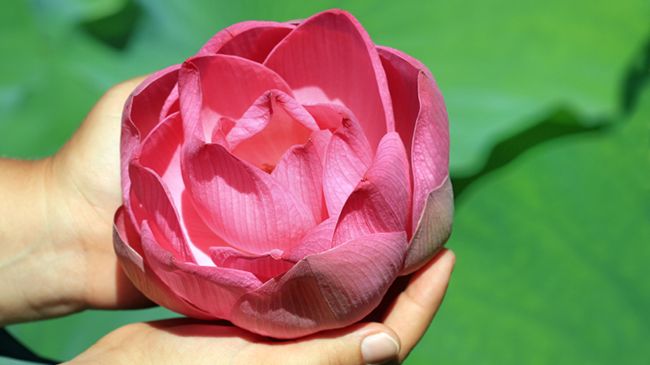
Sacred lotus flower
Revered as a divine symbol for more than 5,000 years, the sacred lotus flower or Nelubmo nucifera is a beautifully powerful plant that has been used in East and Southeast Asian traditional medicine and cuisine for centuries. It is a bowl-shaped perennial plant that is often mistaken for a water lily. This aquatic perennial has large, showy white to pinkish flowers with an ice-cream cone shaped golden yellow receptacle and a dense ring of yellow stamens. This short-lived flower opens up during the morning and begins to lose its petals by the afternoon all the while emitting a pleasant fragrance.
Benefits of the seeds
In Asia the seeds and the fruit have been used to treat chronic insomnia, diarrhea, cardiovascular disease, and skin disorders. In China, Japan, and India the rhizomes are roasted, candied, pickled or sliced and fried as chips. There is even a paste created from the nutlets that is used as a filling in a traditional Chinese pastry but they provide more than the ingredients for a tasty desert. The seeds are rich in protein, amino acids, unsaturated fatty acids, starch, tannins, and minerals. Its richness of antioxidants make it an excellent skin conditioner that not only hydrates but moisturizes both skin and hair and increases skin elasticity. Several cosmetic and skin care products use scared lotus flower extract to aid in skin hydration and balancing oily skin to prevent acne.
Mimosa Tenuiflora tree
Mimosa Tenuiflora, commonly known as the “skin tree,” is a beautiful, fern-like tree indigenous to the southern Mexican lowlands. Used in traditional medicine for over 1,000 years, this treasure is still being used as a very effective treatment for burns and skin lesions. The bark has been used as a treatment for bleeding, an antiseptic, and as a topical anti-inflammatory and pain-relieving agent. Mimosa tenuiflora is prized for its ability to restore the damaged epidermis in remarkable fashion.
Benefits of the bark
There are several components that come together in this extraordinary bark. It is rich in alkaloids, lipids, lupeol, glucoisides, saponins, sterols, steroids, tannins, and a number of different polysaccharides. The polysaccharides alone have anti-inflammatory, astringent, and antiseptic effects when applied to the skin and may even help to promote the growth of collagen.
Our scalp is also a part of our skin so the regenerative properties that aid in skin also apply to the scalp.
Hair benefits
There are many well-documented benefits of both for the body, but what about for hair? The Mimosa tenuiflora bark extract does not just benefit skin but is being used for the treatment of aging hair. Our scalp is also a part of our skin so the regenerative properties that aid in skin also apply to the scalp. Those anti-inflammatory and antiseptic properties are great for those with scalp conditions. The bark heals whereas the extract moisturizes and hydrates. Both can be found separately and used alone, but if you want the benefits of both in hair products, then Nature’s Gate is a good place to start as they utilize these ingredients’ goodness in their products to give you maximum advantage of these ingredients.
[prodmod]